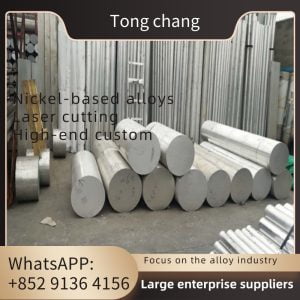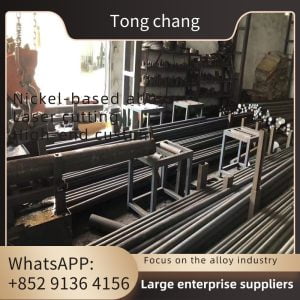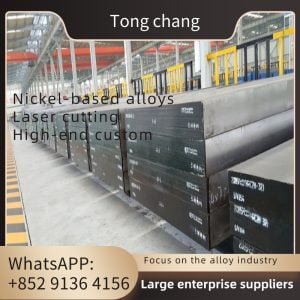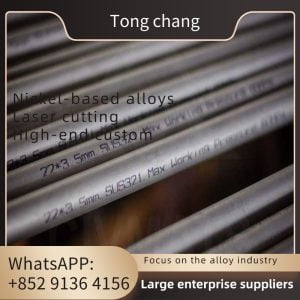钛Grade 1 – UNS R50250, Grade 2 – UNS R50400, Grade 5 – UNS R56400
Grade 7 – UNS R52400, Grade 9 – UNS R56320, Grade 12 – UNS R53400Titanium Seamless Tubing
钛
Titanium Round Bar
Titanium Plate/Sheet
Titanium Seamless & Welded Butt-weld Fittings
Titanium Specialty Forgings 立即合金 offers a large variety of products in materials of titanium including tubing, seamless- and welded pipe, butt weld fittings, flanges, round bar and plate titanium products: 钛
Commercially Pure & Alloyed | 管材
无缝 | 1/16" – 1 1/2" OD | 0.016" – 0.125" WT | | 3 mm – 40 mm OD | 0.5 mm – 3.0 mm WT | 管材
焊接 | 1/2" – 4" OD | 0.028" – 0.250" WT | | 12 mm – 100 mm OD | 1.0 mm – 6.0 mm WT | 管材
无缝和焊接 | 1/2" - 36" | Sch 10S thru Sch 40S | 对焊管件
无缝和焊接 | 1/2" - 36" | Sch 10S thru Sch 40S | 法兰
WN & Blind | 1/2" - 36" | Sch 10S thru Sch 40S
150 lbs | | 圆棒 | 1/2" - 12" | | 板材 | 1/8" – 1" Thick |
Due to its unprecedented strength, lightness, stable and abundant market and non-corrosive characteristics, titanium has emerged as the metal of choice for aerospace, energy production and transportation, industry and medical, leisure and consumer products, notably golf clubs and bicycle frames. Furthermore, due to its strength and lightness, titanium is currently being tested in the automobile industry, which has found that the use of titanium for connecting rods and moving parts has resulted in significant fuel efficiency. BENEFITS OF TITANIUM- High strength,
- High resistance to pitting, crevice corrosion resistance.
- High resistance to stress corrosion cracking, corrosion fatigue and erosion,
- Cold bending for complex piping bends without fittings or flanges
- High strength to weight ratio,
- Weight saving possibilities
- Low modulus, high fracture toughness and fatigue resistance
- Suitability for coiling and laying on seabed
- Ability to withstand hot/dry and cold/wet acid gas loading
- Excellent resistance to corrosive and erosive action of high-temperature acid steam and brine
- Good workability and weldability
TITANIUM APPLICATIONS- 航空航天
- Material of choice in desalination plants,
- Steam condensers
- Pulp and paper plants (chlorate bleaching facilities)
- Process equipment and piping
- Flue Gas Desulfurisation plants
- Disposals system for persistent or hazardous organic waste
- Seawater Management Systems,
- Process industries handling solutions containing chlorides,
- Flanges, fittings, valves, heat exchangers, risers and pipelines
- Sports, building material, medical industry and accessories.
| UNS R50250 Grade 1 | | 碳 | 铁 | 氢气 | 氮 | 氧气 | 钛 | | | | | | 最大 0.10 | 0.20 最大值 | 0.015 最大值 | 0.03 最大值 | 0.18 max | 剩余的 | | | | |
| UNS R50400 Grade 2 | | 碳 | 铁 | 氢气 | 氮 | 氧气 | 钛 | | | | | | 最大 0.10 | 0.30 最大值 | 0.015 最大值 | 0.03 最大值 | 最大 0.25 | 剩余的 | | | | |
| UNS R50550 Grade 3 | | 碳 | 铁 | 氢气 | 氮 | 氧气 | 钛 | | 最大 0.10 | 0.30 最大值 | 0.015 最大值 | 0.05 最大值 | 0.35 最大值 | 剩余的 | | Other each 0.1 max, total 0.4 max |
| UNS R50700 Grade 4 | | 碳 | 铁 | 氢气 | 氮 | 氧气 | 钛 | | 最大 0.10 | 最大 0.50 | 0.015 最大值 | 0.05 最大值 | 0.40 最大值 | 剩余的 | | Other each 0.1 max, total 0.4 max |
| UNS R56400 Grade 5 | | 铝 | 碳 | 铁 | 氢气 | 氮 | 氧气 | 钒 | 钛 | | | | 5.5 – 6.75 | 最大 0.10 | 0.40 最大值 | 0.015 最大值 | 0.05 最大值 | 0.20 最大值 | 3.5 – 4.5 | 剩余的 | | |
| UNS R52400 Grade 7 | | 碳 | 铁 | 氢气 | 氮 | 氧气 | 钛 | | 最大 0.10 | 0.30 最大值 | 0.015 最大值 | 0.03 最大值 | 最大 0.25 | 剩余的 | | Other: Pd 0.12-0.25 |
| UNS R56320 Grade 9 | | 铝 | 碳 | 铁 | 氢气 | 氮 | 氧气 | 钒 | 钛 | | | | 2.5 – 3.5 | 0.05 最大值 | 最大 0.25 | 0.013 max | 最大 0.02 | 0.12 max | 2.0 – 3.0 | 剩余的 | | |
| UNS R52250 Grade 11 | | 碳 | 铁 | 氢气 | 氮 | 氧气 | 钛 | | 最大 0.10 | 0.20 最大值 | 0.015 最大值 | 0.03 最大值 | 0.18 max | 剩余的 | | Other: Pd 0.12-0.25 |
| UNS R53400 Grade 12 | | 碳 | 铁 | 氢气 | 钼 | 氮 | 镍 | 氧气 | 钛 | | | | 0.08 最大值 | 0.30 最大值 | 0.015 最大值 | 0.2 – 0.4 | 0.03 最大值 | 0.6 – 0.9 | 最大 0.25 | 剩余的 | | |
| UNS R52402 Grade 16 | | 碳 | 铁 | 氢气 | 氮 | 氧气 | 钯金 | | 最大 0.10 | 0.30 最大值 | 0.010 最大值 | 0.03 最大值 | 最大 0.25 | 0.04 – 0.08 | | Other: residuals each 0.1 max, total 0.4 max |
| 商品名称 | UNS | Titanium Industry Specifications | 化学成分 | 最小拉伸
(KSI) | 最低产量
(KSI) | 硬度 | 弹性模量 | 泊松比 | | 1 级 | UNS R50250 | AMS AMS-T-81915
美国材料与试验协会 F67(1), B265(1), B338(1), B348(1), B381(F-1), B861(1), B862(1), B863(1), F467(1), F468(1), F1341
MIL SPEC MIL-T-81556 | C 最大 0.10
铁 0.20 最大值
H 0.015 最大值
N 0.03 最大值
O 0.18 max
Ti 剩余 | 35 | 25 | 14.9 | 103 GPa | 0.34-0.40 | | 二级 | UNS R50400 | AMS 4902, 4941, 4942, AMS-T-9046
美国材料与试验协会 F67(2), B265(2), B337(2), B338(2), B348(2), B367(C-2), B381(F-2), B861(2), B862(2), B863(2), F467(2), F468(2), F1341
MIL SPECMIL-T-81556
SAE J467(A40) | C 最大 0.10
铁 0.30 最大值
H 0.015 最大值
N 0.03 最大值
O 最大 0.25
Ti 剩余 | 50 | 40 | 14.9 | 103 GPa | 0.34-0.10 | | Grade 5 | UNS R56400 | AMS 4905, 4911, 4920, 4928, 4930, 4931, 4932, 4934, 4935, 4954, 4963, 4965, 4967, 4993, AMS-T-9046, AMS-T-81915,AS7460, AS7461
美国材料与试验协会 B265(5), B348(5), B367(C-5), B381(F-5), B861(5), B862(5), B863(5), F1472
AWS A5.16 (ERTi-5)
MIL SPEC MIL-T-81556 | 人工智能 最大 5.5-6.75
C 最大 0.10
铁 0.40 最大值
H 0.015 最大值
N 0.05 最大值
O 0.20 最大值
Ti 剩余
V 3.5-4.5 | 130 | 120 | 16.4 | 114 GPa | 0.30-0.33 | | 七年级 | UNS R52400 | 美国材料与试验协会 B265(7), B338(7), B348(F-7), B861(7), B862(7), B863(7), F467(7), F468(7) | C 最大 0.10
铁 0.30 最大值
H 0.015 最大值
N 0.03 最大值
O 最大 0.25
Ti 剩余
其他 Pd 0.12-0.25 | 50 | 40 | 14.9 | 103GPa | – | | Grade 9 | UNS R56320 | AMS 4943, 4944, 4945, AMS-T-9046
ASME SFA5.16(ERTi-9)
美国材料与试验协会 B265(9), B338(9), B348(9), B381(9), B861(9), B862(9), B863(9)
AWS A5.16(ERTi-9) | 人工智能 2.5-3.5
C 0.05 最大值
铁 最大 0.25
H 0.013 max
N 最大 0.02
O 0.12 max
Ti 剩余
V 2.0-0-3.0 | 90 | 70 | 13.1 | 107GPa | 0.34 | | 十二年级 | UNS R53400 | 美国材料与试验协会 B265(12), B338(12), B348(12), B381(F-12), B861(12), B862(12), B863(12) | C 0.08 最大值
铁 0.30 最大值
H 0.015 最大值
莫 0.2-0.4
N 0.03 最大值
倪 0.6-0.9
O 最大 0.25
Ti 剩余 | 70 | 50 | 14.9 | 103GPa | – |
Most of the titanium grades are of alloyed type with various additions of for example aluminum, vanadium, nickel, ruthenium, molybdenum, chromium or zirconium for the purpose of improving and/or combining various mechanical characteristics, heat resistance, conductivity, microstructure, creep, ductility, corrosion resistance, etc. Titanium BenefitsHigh strength,
High resistance to pitting, crevice corrosion resistance,
High resistance to stress corrosion cracking, corrosion fatigue and erosion,
Cold bending for complex piping bends without fittings or flanges,
High strength to weight ratio.
Weight saving possibilities,
Low modulus, high fracture toughness and fatigue resistance,
Suitability for coiling and laying on seabed,
Ability to withstand hot/dry and cold/wet acid gas loading,
Excellent resistance to corrosive and erosive action of high-temperature acid steam and brine,
Good workability and weldability. Titanium Chemical CompositionPalladium (Pd) and Ruthenium (Ru), Nickel (Ni) and Molybdenum (Mo) are elements which can be added to the pure titanium types in order to obtain a significant improvement of corrosion resistance particularly in slightly reducing environments where titanium otherwise might face some problems due to insufficient conditions for formation of the necessary protective oxide film on the metal surface. The formation of a stable and substantially inert protective oxide film on the surface is otherwise the secret behind the extraordinary corrosion resistance of titanium. The mechanical properties of commercially pure titanium are in fact controlled by "alloying" to various levels of oxygen and nitrogen to obtain strength level varying between approximately 290 and 550 MPa. For higher strength levels alloying elements, e.g. Al and V have to be added. Ti 3AL 2.5V has a tensile strength of minimum 620 MPa in annealed condition and minimum 860 MPa in the as cold worked and stress relieved condition. The CP-titanium grades are nominally all alpha in structure, whereas many of the titanium alloys have a two phase alpha + beta structure. There are also titanium alloys with high alloying additions having an entire beta phase structure. While alpha alloys cannot be heat treated to increase strength, the addition of 2.5% copper would result in a material which responds to solution treatment and ageing in a similar way to aluminum-copper. Titanium DensityTitanium is more then 46% lighter than steel. For comparative analysis, aluminum is approximately 0.12 lbs/cu.in, Steel is approximately 0.29 lbs/cu.in, and Titanium is approximately 0.16 lbs/cu.in. Titanium Corrosion ResistanceTitanium's outstanding corrosion resistance is due to the formation of a tightly adherent oxide film on its surface. When damaged, this thin invisible layer immediately reforms, maintaining a surface which is completely resistant to corrosive attack in sea water and all natural environments. This oxide is so resistant to corrosion that titanium components often look brand new even after years of service. | 






